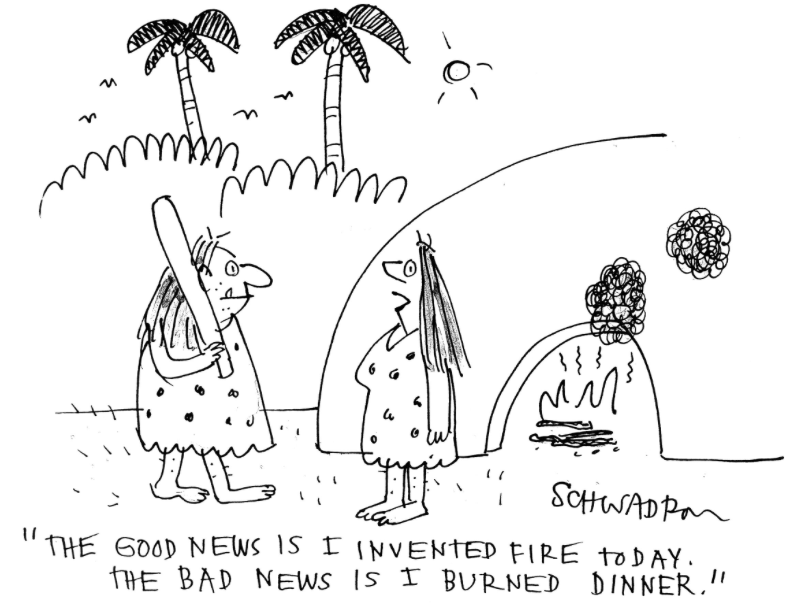
What a difference a couple weeks can make. From a full year of smooth sailing without so much as a wave, to what may feel like a full on storm in the stock market. Ironically, the storm was started when markets received word of solid wage growth and good economic numbers. The good news sent the markets down a bit due to added pressure on interest rates and inflation concern.
But before we all start to worry, lets put this in perspective a bit. As I write this, the stock market value is simply back to the early December levels, a time when everyone seemed pleased with the direction and returns. Since 1945, the S&P 500 has registered 77 drops between 5-10%, almost a once a year average (Guggenheim study 9-2017, Pullbacks & Bouncebacks) . The recent drop touched 10.17% top to bottom and has started a small recovery. This technical hiccup has done little to reset the tremendous bull market thus far. It may feel like a violent storm for some given the lack of any waves for the past 23 months, but it is a normal and dare I say healthy decline. Since early 2016 (when we had a similar 15-20% market decline), we have seen some of the lowest volatility in market history. However, 10% declines are a regular part of long term investing and we need to be careful about how any headlines may affect our emotions. So what can we expect based on history if this decline continues?
Average Bull Market Corrections
The average bull market correction is 13% over four months and takes an average of four months to recover according to Goldman Sachs Chief Global Strategist. For now, this seems the most likely outcome.
Outsized Market Corrections – Bear Market
If the decline triggers deeper trading issues, but not a recession, and stretches to a 20%-30% decline; then the pain usually lasts 22 months on average. Since the depression we have seen 4 of these events. They ranged between 27-36%. (S&P 500 Historical Charting)
The Big Ones
30% corrections certainly hurt, but most moderate portfolios can be risk managed (via diversification) to keep the downside below the full market corrections. Meaning the pain felt by moderate or conservative accounts is a somewhat less decline. Occasionally declines of -50%+ happen. This has happened 3 times since 1940: from 1973-1974 (inflation from oil embargo wars), 2000-2002 (dot com bubble), 2007-2009 (housing bubble and connected derivatives market). Each time was completely unique in the reasons the market declined well beyond a normal or bear market correction. (S&P 500 Historical Charting)
Evergreen’s Current Thoughts on Decline
We believe the market growth over the past 12 months has become a little stretched. We explained in our last commentary that interest rates…NOT tax reform would likely dominate 2018 headlines. When the government spends more than it brings in for tax revenues it must sell bonds to fund the extra spending. The government would be wise to never spend more than it earns….as my son say…no duh Dad! This possibility, coupled with the recent FED actions to hike rates has added to rate pressures. Higher rates can increase strain on the economy (will it be temporary or long lasting is the big question?). The market is currently weighing the strength of companies and the economy against the possibility of higher rates to figure out what it can absorb. This will continue through much of 2018 and may add to volatility.
The first wave of declines is usually fast and unexpected…more so today than ever before with index funds and computer trading. The speed of decline certainly can be alarming, but it also provides good opportunity. It is important to remember the economy is still strong. We currently have no signs of a recession, banks are very solid, and we are coming of a tremendous market and economic run up since 2016. A little decline should be expected and perhaps welcomed. I do not like predicting and we are planning for everything. However, the data thus far seems to indicate a 10-20% correction similar to 2016 and then a rebound remains the more likely outcome (a normal correction). Perhaps rates push the economy into a recession, but so far there is no data to suggest this is happening. To reiterate, it was the good news of higher wage growth and solid economic numbers that started this decline. If the economy remains strong, it will provide a floor for the market decline.
The Atlanta Fed is now projecting real GDP growth at a 5.4% annual rate in the first quarter, which would be the fastest growth for any quarter since 2003. We think that’s on the optimistic side and expect growth at more like a 4.0% annual rate, but, either way, the economy is showing possible signs of acceleration and growth of 3.0% -3.5% for 2018 (the fastest “annual” growth since 2003).
February 2nd jobs report brought news that wages are now accelerating as well. Average hourly earnings grew 0.3% in January and are up 2.9% from a year ago.
Good news ended up being bad news as it pushed rates higher. For this reason we believe this pullback is more likely a reset and will experience a quicker rebound. A recession will come, and we never know for sure how it starts, but as of now this looks like a shorter term set back.
Conclusion and Actions –The Start of Added Opportunity!
All plans remain well intact. In fact, we are generally running well ahead of long term planning targets. Although in the midst of a pullback it feels like we took 3 steps forward and 2 steps back. Give it time. We have explained a pullback was needed and HEALTHY to keep us from becoming dangerously overvalued. We believe this pullback may help us avoid one of the bigger market declines that can be much more dangerous for the economy. That said, we have a very clear plan for taking advantage of opportunity regardless of what unfolds.
Step 1: On Wednesday, February 7th, when markets approached a nearly -10% decline, we traded any account with excess cash into domestic equities to take advantage of any rebounds that may occur.
Step 2: For moderate and conservative accounts we hold a significant amount of bonds to dampen downside risk and provide stable income. We have seen these bonds decline very little (some have increased in value) during the recent stock market decline. If we see stocks decline enough to allow rotation without sacrificing income, we would much prefer adding 5-10% more into our stock allocations for improved growth AND income.
Step 3: If we see 20%-30% decline without any recession data, we would slowly move to our maximum stock allocation for moderate and conservative accounts. Move is dependent on your unique plan design and objectives.
In all accounts we will of course be monitoring and trading investments as needed. We love to use down markets to swap holdings into deeper value as we await the recovery.
We are never excited to see declining accounts….but we know time will return them to a high water mark. My excitement is derived from the ability to own great investments at a good price which will help fuel long term results. Our disciplined approach has rewarded clients through multiple cycles, and we are excited to harvest the opportunity for your long term goals!
Evergreen Wealth Management, LLC is a registered investment adviser. Information presented is for educational purposes only and does not intend to make an offer or solicitation for the sale or purchase of any specific securities, investments, or investment strategies. Investments involve risk and unless otherwise stated, are not guaranteed. Be sure to first consult with a qualified financial adviser and/or tax professional before implementing any strategy discussed herein. Past performance is not indicative of future performance.
